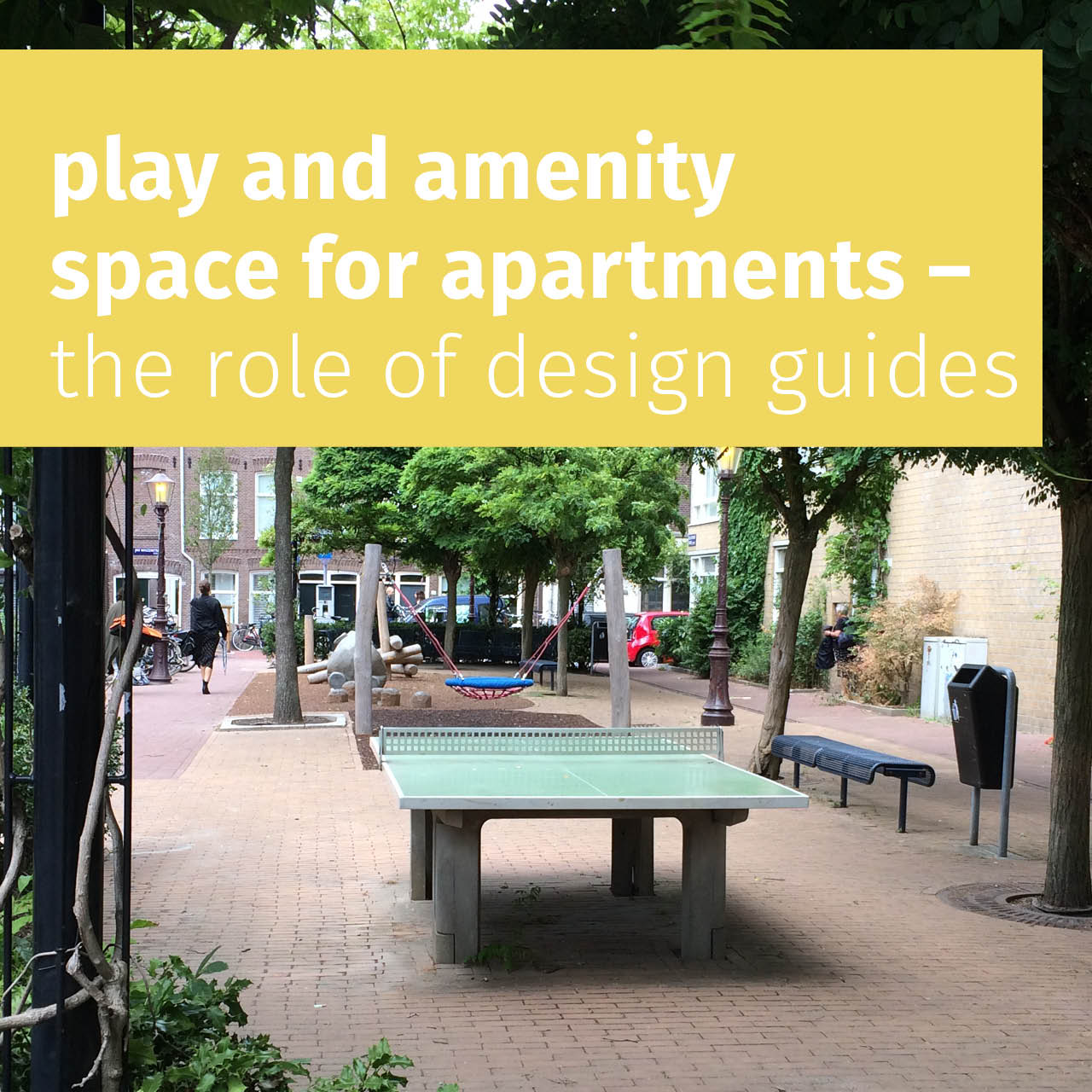
In the National Design Guide published in early October 2019 references to play run through the document. It describes the role of ‘informal doorstop play’ (p.26) the need for a hierarchy of public spaces including ‘small local spaces’ (p,30) and the need for ‘direct access to well overlooked communal space’ (p. 39) – all of these highlight the need to provide play or multi-functional amenity spaces accessible from apartment buildings. Local guidance can take this intention further giving parameters or rules for how much play and how this should be provided and maintained.
Over a decade the London Mayor’s Housing Design Guide (2010) and Housing SPG (2016) have had a clear impact on the design of housing by setting out forty-one clear quality expectations. These cover the placemaking role of sites, the provision of communal and play space and issues to do with building design such as; space standards, aspect and sunlight, ceiling heights, noise and privacy, resource use and durability. These spatial quality standards have had an impact on the quality of private amenity in new development. For example, the requirement for a minimum of 5m2 of private outdoor space for each dwelling has led to generous balconies becoming the norm and to GF apartments often having carefully considered garden interfaces.
The Bristol Urban Living SPD, making successful places at higher densities adopted in November 2018 follows on from this with general guidance about design at city, neighbourhood, block and building scale – with quality guidance is presented as fourteen questions or tests. Does the scheme provide sufficient outdoor space? Introduces the same standards for private outdoor space also allowing that space can be provided in private communal gardens. Does the scheme creatively integrate children’s play? Noting that in recent years the number of children living in the city centre had more than doubled the guidance requires the integration of informal doorstop play for the under fives of setting a standard of ten square meters per child for developments with an occupancy of ten children or more.
Swindon’s Residential Design Guide SPD, 2016 requires a communal space equivalent to the footprint of the apartment building or ten square meters per apartment is also suggested. It also highlights the need for clearly identified entrances from the street, dual aspect orientation and private amenity space. Teignbridge District Council’s Draft Design Guide gives more detailed guidance about a similar range of issues with much emphasis on providing a ‘reference point for character and identity of settlements within the district’. When describing expectations for apartment buildings it also advises – street entrances, defensible space to ground floor habitable rooms, parking to rear but makes no specific requirement regarding amenity.
Sometimes developers will say that RSL’s wish to avoid the maintenance cost of private amenity provision but as a benchmark Peabody’s Design Guide says each dwelling should have access to private external amenity space to provide access and views of green spaces to residents. It also advises that design teams should include landscape architects a recommendation often made to clients in design review.
- The National Design Guide, 2019 https://www.gov.uk/government/publications/national-design-guide
- Housing Supplementary Planning Guidance, London Mayor, 2016 https://www.london.gov.uk/sites/default/files/housing_spg_final.pdf
- The Bristol Urban Living SPD, City Design Group 2018 https://www.bristol.gov.uk/documents/20182/34520/Urban+Living+SPD+Making+successful+places+at+higher+densities.pdf
- Swindon Residential Design Guide SPD, 2016 https://www.swindon.gov.uk/info/20113/local_plan_and_planning_policy/651/planning_policy_guidance/2
- Teignbridge District Council, Design Guide Consultation https://www.teignbridge.gov.uk/planning/planning-applications-and-appeals/planning-design-guidance/design-guide-consultation/
- Peabody Design Guide, July 2018 https://www.peabody.org.uk/media/10184/peabody-design-guide_complete_low-res-web-min.pdf
… … …
Image: Extract from Bristol’s Urban Living SPD
… … …